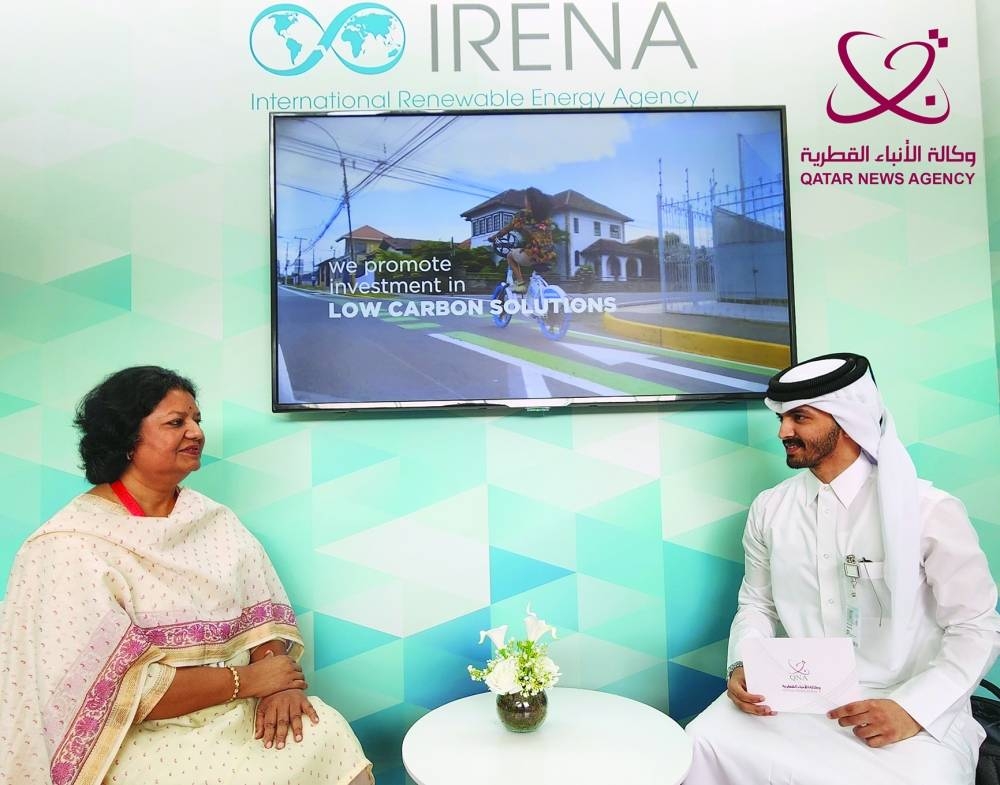International Renewable Energy Agency (IRENA) deputy director-general Gauri Singh has said that Qatar is an example to follow in the field of transition to renewable energy sources.
“We all know that Qatar is one of the largest gas producers in the world, but now it is moving to renewable energy sources, and that is something people are watching with great interest,” she said.
In an interview with the Qatar News Agency (QNA), Singh said that Qatar is an example for other countries to follow and to see the type of challenges it overcomes.
The official added that Qatar has more work to do in this field, especially with regard its ability to bring more renewable energy sources to the electricity grid, and she affirmed that this trend stems from the political will and long-term thinking.
She noted the great role Qatar can play in partnership with IRENA in financing projects in developing countries through the mechanisms owned by the agency.
"I think that this will be a big step forward," Singh said.
She said the political momentum has been raised around renewable energy over the past two years.
Almost all major economies, in addition to many other middle-income economies and smaller developing economies, have committed to a net-zero emissions future by 2050-2070.
"The political momentum that has accelerated is very important because now we are not talking about renewable energy only as a provider of green electrons in the grid, but we are talking about the further transformation of the economy,” Singh pointed out. “We are now looking at technologies and ways to transfer energy from fossil fuels to renewable energy sources.”
She emphasised that the international community is called upon to make greater efforts to reduce global warming by raising the allocations directed to renewable energy and increasing it to the level of $4.4tn.
Singh called on the least developed countries to clarify their policies related to the energy transition and build their capacities in the field of renewable energy, especially since 70% of financing is provided by the private sector, which means that governments still have a big role to play in providing the remaining 30-35%, as that could stimulate more money coming from the private sector.

International Renewable Energy Agency (IRENA) deputy director-general Gauri Singh said that Qatar is an example for other countries to follow and to see the type of challenges it overcomes.
